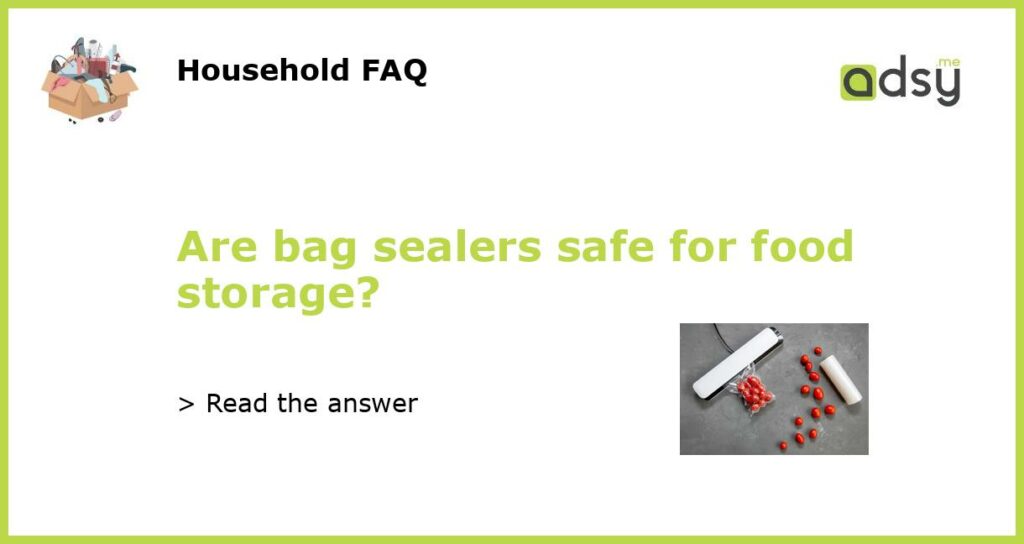How bag sealers work in food storage
Bag sealers are a popular tool used by many people for food storage, but are they safe to use? Bag sealers work by using heat to melt the top of a plastic bag, creating a seal that keeps the contents fresh for longer. They come in different types, including handheld, countertop, and vacuum sealers. Most bag sealers are safe for food storage as they do not leave any harmful residue on the contents. However, it is essential to use them correctly and avoid potential safety hazards.
The potential risks of bag sealers
While bag sealers are generally safe to use for food storage, there are still some potential risks that users should be aware of. One of the most common risks is burns from the heat source used in sealing the bag. Users should always follow the manufacturer’s instructions and be careful when handling the sealer to avoid accidents.
Precautions for using bag sealers
To ensure safety when using bag sealers for food storage, users should take some precautions. First, it is essential to read the manufacturer’s instructions and follow them correctly. Users should also avoid exposing the sealer to water or other liquids while in use to prevent electrical shocks. Additionally, it is crucial to keep the sealer away from children and pets to avoid accidents.
Alternatives to bag sealers for food storage
If you are concerned about the safety of bag sealers, some alternatives can be used for food storage. One of such is glass containers, which are sturdy and do not pose any safety risks. Another option is reusable silicone bags that can be sealed using a simple clip, eliminating the need for heat.
Bag sealers are safe for food storage when used correctly, and the user takes the necessary precautions. However, it is essential to be aware of potential risks and take steps to avoid them. If you are not comfortable using a sealer, there are alternative storage options that can be used instead.



![Mini Bag Sealer, [Rechargeable] ORIA Handheld Bag Heat Vacuum Sealers, 2 in 1 Heat Sealer and Cutter, Bag Sealer Machine Food Saver for Plastic Bag, Fresh Bag, Food Storage (USB Cable Included, Black)](https://m.media-amazon.com/images/I/31AqSLegB8L.jpg)


